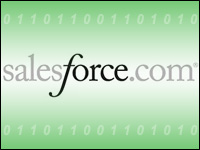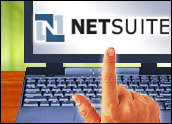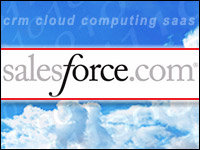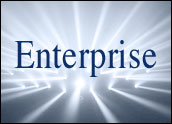
Salesforce.com’s buy of Jigsaw is the latest, most indicative market mover in the transition to a lead generation economy.
Twitter’s forays into a sponsored tweets business model announced last week at Chirp is another. Yahoo selling its soul to Microsoft for Bing is another. And just about everything that Google does is but another. And everything that Facebook does? Ditto. Apple loves the idea, one download at a time. Amazon? One purchase at a time.
These players are poised to grease the skids leading to a lead generation economy, one that makes conventional and current online advertising no more relevant than rabbit ear antennas for the top of your black-and-white television.
Only a year into the data-driven decade, and the ways in which user-, buyer- and social-interactions are rapidly being brought to bear on B2C and B2B commerce are piling up — as never before. The model makes especially good sense for B2B, as these decisions are more often data- and information-driven, not emotionally charged as the advertising-juiced B2C domain so often is. And more and more B2B purchases start and end with an online search.
Adding a powerful ingredient to the mix, Jigsaw has huge data sets and the ability to cleanse and verify who’s who on the Web. As buyers, sellers, social types and knowledge seekers, people the world over are conducting more and more of their everyday lives and business roles online.
All this leaves trails, crumbs, identities, scraps and gems about who we are, what we do and what we may want — as individuals, families, businesses, employees. It’s a Noah-scale flood of data. And if you take a mere scrap of what you know about someone online from that flood and run it through Jigsaw it will tell you yet more about the person, or verify that what you already have is correct and current.
Incidentally, Jigsaw does this with data that is updated very rapidly, often daily or less. This is not those big CD-delivered data sets that are obsolete before they leave the hard drive. The whole arena of business intelligence is the gorilla in the room … it provides even more and better data and helps decide what value to bring to whom and when.
There’s No Whining in Business
To flesh out the “who” part, Jigsaw, like a lot of others in the field, is building the up-to-date meta directories of who’s who and what’s what online. From Marc Benioff’s choice, we should assume that Jigsaw fit the right mix of being cloud-based, current, comprehensive and B2B-oriented.
Oh, and don’t give me the “I’m a victim” crap about how your identify is being pilfered or your privacy invaded by this data collection and cleansing. The data is being contributed by you and everybody else — e.g., Facebook — all the time, freely and openly — just by being online. It’s the quid pro quo of the Web.
You want the benefits of the Internet, you give up some data about yourself along the way. It’s life today. If you want privacy, stay off the Internet. Businesses and enterprise buyers, incidentally, actually want to be known and to know about others. Such data is undoubtably the lingua franca of modern business. Ask Google how it’s keywords sales are going.
And so why would Salesforce.com pay US$142 million for Jigsaw’s cache and carry and data services?
Because now businesses that use Salesforce’s CRM, SFA and SasS/PaaS ecosystem can know a lot more about who’s who inside the business processes that they are producing and involved in. That’s right … processes. The economy needs to bind services and processes together just as much as buyers and sellers of goods. The common denominator is the users, and their identifying data.
So think of Jigsaw as bringing cloud-based ETL from all of your Web interactions that feed the leads that enter into your sales and customer resource data bases and interactions. I’m proud and happy to have been successfully experimenting with the knowledge-driven content onramps to the search and social media myself for five years. It’s strong, knowledge-based content that precisely attracts and informs the users that begets their participation that begets the data that gets cleansed that nurtures more information sharing that begets the CRM process that leads to a sales cherished by both parties.
Incidentally, if Salesforce.com now straps on a marketing automation service (or ecosystem) to what they have — cleaning the data all along the way via Jigsaw — you get a glimpse of the lead generation future. Google could do this any time … they have all the parts necessary. Indeed, Salesforce.com and Google are on a collision course even more with the Jigsaw buy.
Dying Species
Which brings us to advertising — the Neanderthal of the e-commerce evolutionary tree. Ads online or off — search or banner — are big, dumb, blunt, hairy instruments of joining up buyers and sellers based on ignorance about each other. You want to reach young men with money and a yen for beer and pickup trucks? Spend millions on Superbowl ads. Very efficient.
Trouble is that I also have to watch these ads about beer and trucks, neither of which I need any information on right now. Give me some data I can use in my life and business, please.
I think the future of advertising is dwindling into the role of a cheap sidewalk hawker, and funneling a few unsure souls into a sideshow. Maybe advertising will simply become one of many ways that buyers and sellers enter into a more efficient data-driven lead generation process … Just like the one that Salesforce.com is build, buy and partnering its way to ASAP.
The money now spent on advertising will be moving aggressively to the lead generation portion of the equation, where the ROI is precise and understood by all. Most advertising is bought via the credit default swaps method of tails, I win (the media company), heads, you lose (the advertiser).
The lead generation economy does away with the murky nature of advertising’s true value and return. In a lead generation process, you spend X to get Y. All the variables are measured and adjustable — and it scales up as well as down.
Using readily proffered attention and affinity data, users can get a closer fit to what they actually want in terms of information and opportunity. Sellers can fine-tune the information and offers they direct into the buying process. Over time, this can be a proficient fit right down to a one-to-one relationship, from buying Boeing 787s to a stick of chewing gum.
It’s clearly the future: B2B and B2C commerce driven by data-empowered inferences between what buyers need and what sellers have. Only the price needs to be negotiated. Perhaps Salesforce.com will broker that too?
So who will be in the uber hub position, the meta directory and meta facilitator for the lead generation economy future? Media companies want it, technology companies want it, search and social media companies want it. And they all should — it’s a trillion dollar business opportunity.
Salesforce.com is clearly in the game. May the best data win.
Dana Gardner is president and principal analyst at Interarbor Solutions, which tracks trends, delivers forecasts and interprets the competitive landscape of enterprise applications and software infrastructure markets for clients. He also produces BriefingsDirect sponsored podcasts.


















































Hey Dana, I agree — this is all interesting stuff and very market indicative. Here’s my question though . . . if Jigsaw collects its data via Crowdsourcing as opposed to a modeled data approach, how can they deliver clean data? The reason that I ask is that my sales team has used Jigsaw data in the past and it isn’t very accurate.
So, will SalesForce get a bloody nose over this if they can’t clean up the data? I’d think that their clients would not be happy — I know I wasn’t and neither was my CEO. Any idea how they’ll address this? Thanks! Excellent insight.